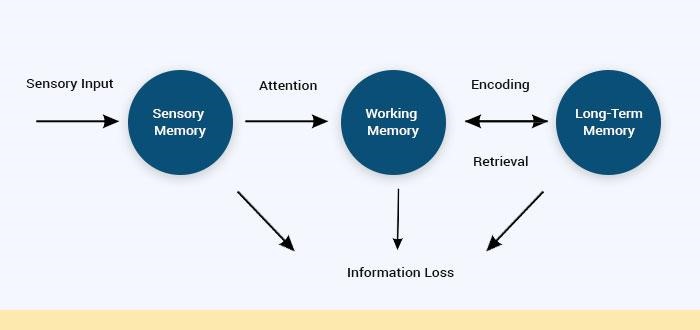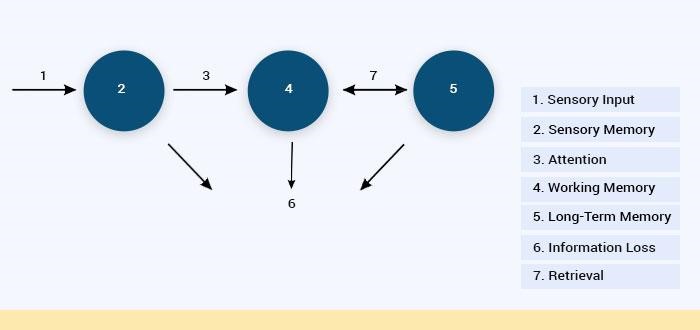Managing Cognitive Load in Content Design
- 22 December, 2021
- Reading Time: 10 min
“The instructor is going too fast.”
“This content is too complex to understand.”
“I simply can’t get a hang of it and it’s too much to grasp in a short time.”
Sounds very familiar, right?
All these cases hint at information overload. Cognitive load theory in Instructional Design comes to the rescue. It prescribes a scientific way to design learning materials at a pace and level of complexity that the learner can fully understand. The theory was proposed by John Sweller in 1988 and is built on the way the human mind processes information. Let us understand how the human brain processes information.
Information enters our brain via our senses.
It is then filtered by our sensory memory. Sensory memory holds the filtered information briefly and passes it onto working memory, also called short-term memory or temporary storage space.
Working memory then processes the information and passes it on to long-term memory where it is stored permanently.
The information processing process is depicted below:
Working memory has limited capacity and it can hold limited information at a time, additional information passed on to it will be lost.
What exactly is the capacity of working memory then?
As per John Miller, working memory can hold between 5 to 9 chunks of information at a time, and with maintenance rehearsals, it may be available for up to 20 minutes. Cognitive load relates to the amount of information the working memory can hold. In order to avoid cognitive overload, instructional methods should avoid activities that do not directly contribute to learning and focus on optimizing working memory.
To understand how instructional methods reduce cognitive load, let us take an example.
The information processing diagram which we saw is now presented with labels on the side:
Did you face a challenge in interpreting this diagram?
In this case, there are multiple sources of visual information and hence, the learners’ attention is divided between them.
To process this diagram, the brain first stores the number and position in working memory and then replaces the numbers with labels. Naturally, there is an extra load on the working memory. A labeled diagram puts less load on working memory than a diagram with labels on the side.
Working memory is limited. However, by understanding the way it functions, Instructional design principles can be used to optimize it and ensure that the learner learns effectively.
Here are some ways to optimize working memory:
Wherever possible, chunk the content as per Miller’s 7 ±2 rule. Working memory can process 5 to 9 information chunks, in this way information loss can be avoided.
Visual and auditory information is processed separately by working memory in the manner that auditory items do not compete with visual items for working memory. Working memory can be extended by adding both auditory and visual information.
Explanatory information, when narrated, loads working memory less, as compared to when it is written. Hence, adding audio makes learning more effective.
Always build the concepts on the learner’s prerequisite knowledge. Connect the complex topics with what the learner already knows.
Merge multiple sources of visual information whenever possible to avoid split attention effects.
Reduce the problem space by giving solved examples followed by partially solved examples before giving unsolved problems.
By applying the Cognitive Load Theory principles during the design phase, instructional designers can significantly reduce the load on working memory and help learners learn effectively.
Remember that if you want to learn better do not overload your brain. The focus of cognitive load theory is to do just that.
Explore the latest insights



